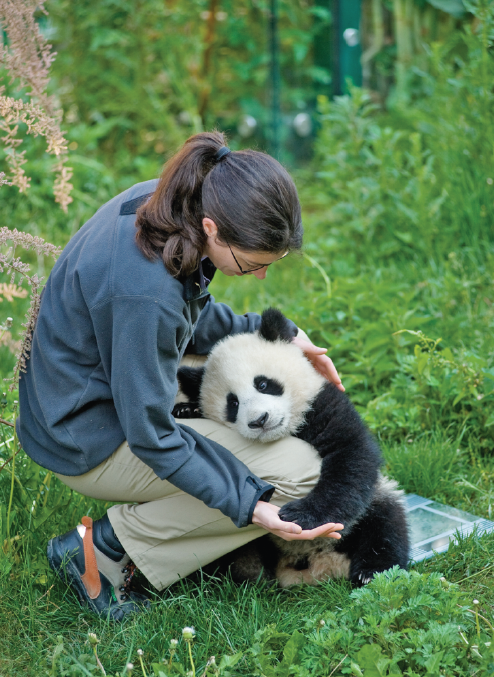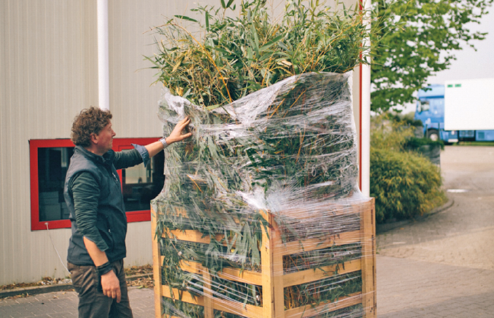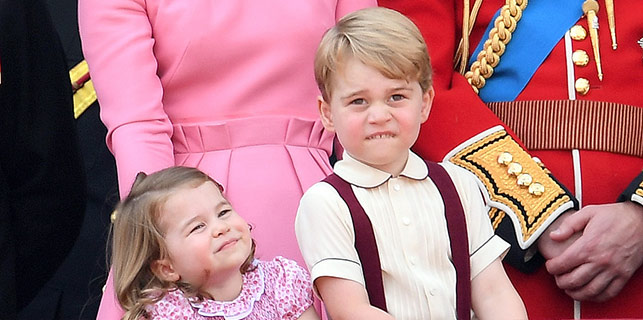Panda power
Cuddly bears-beloved around the world-are an effective tool for China
If ping-pong was a useful tool for modern China to normalize its relationship with most foreign countries in the early 1970s, giant pandas have become more like a powerful weapon.
Germany is preparing to welcome two giant pandas to Zoo Berlin, a positive result of German Chancellor Angela Merkel's visit to China in 2015. It will be the seventh European country to host the black-and-white bears.
Two pandas will be loaned to Germany for 15 years, based on an agreement signed between Zoo Berlin and the China Wildlife Conservation Association, as part of international cooperative projects in giant panda breeding.
"Zoo Berlin will pay $1 million (891,000 euros; £782,000) each year for the two bears," says Andreas Knieriem, the zoo's director. "The money will be made available to the Giant Panda Conservation Fund."
Of the total, 70 percent goes directly toward the protection of natural habitat in China. Twenty percent supports the Chengdu Panda Base's research into improving breeding success, and 10 percent covers administrative costs on the Chinese side.
Keeping giant pandas might be the dream of many zoos, but usually it takes lengthy, intensive negotiations before a final agreement is reached.
Every zoo where pandas are kept has an individual agreement with Chinese authorities under which the various contractual stipulations are documented. The loan period is either 10 or 15 years, depending on the terms, with a possibility of extension.
Schonbrunn Zoo in Vienna, Austria, welcomed a breeding pair of giant pandas from China in 2003, and successfully bred five cubs. Panda cubs are routinely returned to China when they turn 2 years old.
|
 |
|
Eveline Dungl, curator of Schonbrunn Zoo, meets Fu Long. The zoo in Vienna, Austria, welcomed a breeding pair of giant pandas from China in 2003, and successfully bred five cubs. SCHONBRUNN ZOO |
Eveline Dungl, the zoo's curator, says: "The animals are seen as a loan, and they remain the property of China."
The first agreement between Schonbrunn Zoo and the Chinese Wildlife Conservation Association was limited to 10 years, but extended by a new 10-year contract.
The panda protection project is built on various pillars. Money goes to support both the Chinese Ministry of Forestry and the National Nature Protection Authority, Dungl says.
"The central point is the creation of panda protection zones and migration corridors between the existing nature reserves. The zoo is obliged, together with other institutions, to carry out research projects, the results of which are to be used for the good of the animals both in the wild and in human care," she says.
Ahtari Zoo in Finland is set to welcome two pandas by the end of this year. This was agreed to during President Xi Jinping's state visit to the country in April.
Juhani Haapaniemi, CEO of the zoo, says that because pandas are a national treasure of China, zoological and veterinary conditions are established to a high standard before the animals' arrival.
"Together we discussed and planned the conditions for the panda building, outdoor enclosures and several other issues including veterinary practices, source of bamboo food and breeding conditions for the panda in Finland," Haapaniemi says.
The climatic conditions at Ahtari, with four distinct seasons and mild and pleasant snowy winters are optimal for the breeding cycle of the giant panda, he says, adding that "our obligation is to support China in ensuring the best possible breeding conditions".
In September 2016, the giant panda was downgraded from endangered to vulnerable by the International Union for Conservation of Nature on the global list of species at risk of extinction.
According to the latest national panda survey, there are 1,864 adult giant pandas estimated to be living in the wild.
The change in status for the panda on the group's red list in 2016 was the result of a positive change observed in wild panda populations and their habitat size over more than a decade, says Wan Hui, giant panda program leader of the World Wildlife Fund in China.
"The establishment of more panda protection areas, strengthened management approaches and conservation efforts on the ground have been identified as contributing factors toward this," Wan says.
The WWF, an organization dedicated to protecting the future of nature, has used the giant panda in its iconic black-and-white logo since 1961.
Commenting on why people are crazy about the cute animals, Berlin Zoo director Knieriem says: "The psychological concept of the Kindchenschema, which means scheme of childlike characteristics, might be the best explanation why we adore some animals and are happy to eat others.
"From a conservationist point of view, pandas-once critically endangered-might also be something that contributed to their worldwide popularity," says Knieriem, who believes a mix of both led to the WWF choosing bamboo-eating bear as its logo, giving the giant panda celebrity status. It's a likable ambassador for endangered species and conservation efforts.
Because of the rarity of giant pandas in Western zoos, Knieriem says: "It is always a special experience for Westerners to see these exotic animals in real life, compared with horses or deer, for instance, which we can see all over Germany".
For panda-lovers who want to get close and cuddly with the creatures without leaving their homes, there's the giant panda channel online, iPanda.com, which was officially launched in August 2013. It features a 24-hour live stream of giant pandas.
The site was jointly developed by the Chengdu Research Base of Giant Panda Breeding and China Network Television, aiming to provide a window to observe pandas' daily lives and address concerns about endangered species generally.
Twenty-eight cameras in five parts of the base have been installed, capturing the everyday life of the animals. The panda broadcast is presented in English, simplified Chinese and German.
The site is extremely popular in the West. Recently, the footage of a panda cub grabbing a keeper's leg in China was reported to have received 163 million views on Facebook in just four days.
A panda's daily diet consists almost entirely of the leaves, stems and shoots of various bamboo species. Bamboo, a native plant in China and mainly found in Sichuan, Hunan and some other regions, contains little nutritional value, so pandas must eat at least 12 to 38 kilograms every day to meet their energy needs.
But they do branch out, with about 1 percent of their diet consisting other plants and even meat, according to the WWF.
For example, in addition to the bamboo, pandas in Zoo Berlin are also fed bamboo shoots, specially formulated steamed bread, cookies, carrots and eggs.
The Netherlands-based company Bamboo Giant has been a major bamboo supplier, servicing more than half the zoos in Europe that house the giant pandas.
Bennie Nielen, the owner of the company, says: "We send about eight to 10 varieties of bamboo to each zoo every week-a total of 1,000 to 1,400 kilograms. On average, a giant panda can eat 40 to 70 kg a day.
|
 |
|
Bennie Nielen's company Bamboo Giant in the Netherlands has been a major bamboo supplier, servicing more than half the zoos in Europe that house the giant pandas. CHINA DAILY |
The grower started providing bamboo to pandas at Zoo Berlin 15 years ago, when the oldest male, Bao Bao, was still alive. It will resume supplying the zoo when the two new pandas arrive. It also provides bamboo to Schonbrunn Zoo in Austria, Pairi Daiza in Belgium and Ouwehands in the Netherlands.
"We receive feedback from each zoo every week regarding their diet, and it is interesting to note that their favorite species varies from time to time, based on their mood of the day," Nielen says, adding that "in general, pandas love bigger and thicker pieces and stems over young shoots".
With more pandas coming to Europe, Nielen says the demand for bamboo has tripled over the last few years, and he is confident that it will continue to grow.






















